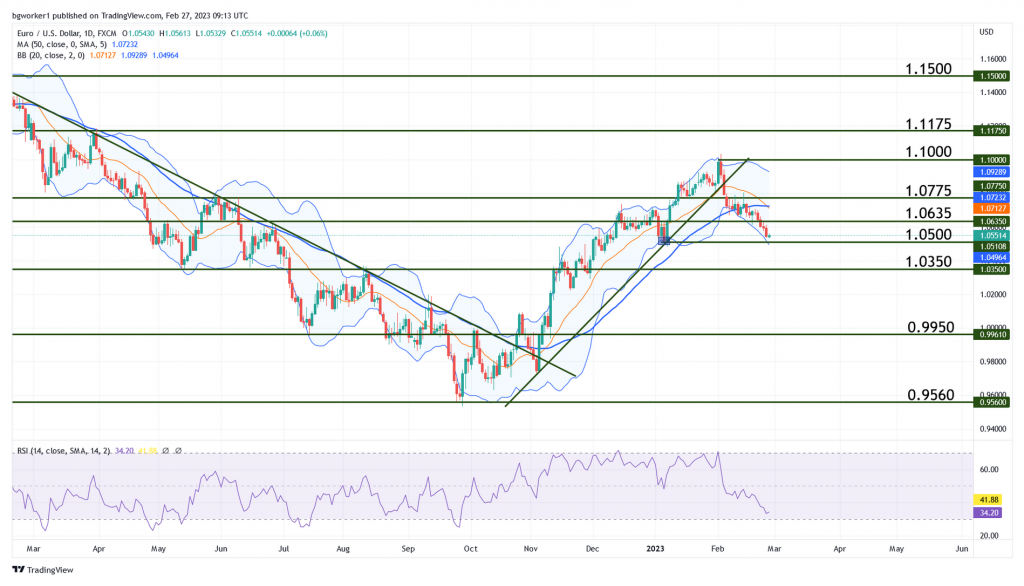U.S. Inflation Still Stubborn. Eurozone CPI Up Next
The Greenback Prints New Highs, Reaches Key Support vs. the Euro.
The Core PCE Price Index delivered yet another surprise last week by exceeding analysts’ forecast by a hefty margin, prompting the USD to drive higher. The currency markets are currently driven by expectations that the peak Federal Funds Rate will be higher than initially thought and will remain that way for a longer period.
The Personal Consumption Expenditures (PCE) Price Index shot up 0.6%, while the forecast was 0.4%. The previous figure was revised from 0.3% to 0.4%. Fed Chair Powell mentioned that monetary policy will be data-dependent going forward, and this raises the question of whether the Fed will continue with 25-bps hikes or will they step on the gas with 50-bps hikes. According to CME’s FEDWATCH tool, there’s a 72.3% chance for a 25-bps hike and a 27.7% chance for a 50-bps hike at the next FOMC Meeting.
ECB President Lagarde adopted a similar stance during an interview last Friday, saying that the ECB will decide meeting by meeting what to do, depending on the economic data. Currently, there’s a high probability of another 50-bps hike in March. The Eurozone CPI is due for release this week, revealing another piece of the puzzle.
Key Data for the Week Ahead
Tuesday at 3:00 pm GMT the U.S. Consumer Confidence survey comes out, with an anticipated reading of 108.5 (previous 107.1). Although the release is marked as ‘high-impact’ on most Economic Calendars, the effect is usually medium unless a surprising number comes out.
The ISM Manufacturing PMI comes out Wednesday at 3:00 pm GMT, followed by the Services PMI on Friday at 3:00 pm GMT.
On the Euro side, the main event of the week is the release of the Consumer Price Index and its Core version, scheduled for Thursday at 10:00 am GMT. The CPI is expected to drop from 8.6% to 8.2%, while the Core version is expected to remain unchanged at 5.3%.
Technical Outlook – EUR/USD
The pair is currently trading at 1.0552, very close to the support at 1.0500, which is also the previous low. If the bears manage to move the price below 1.0500, we will likely see an extended drop, with 1.0400 as the potential target.
As long as 1.0500 remains intact, we can consider the current move a retracement in an uptrend. However, if this barrier is surpassed, it could mean that the pair is getting ready for an extended period of bearish or sideways movement.
The RSI is moving down, approaching oversold, but it still has a way to go and the pair is trading below the 50-day MA. These are bearish signs that indicate that the bears are in control of short-term movement.
